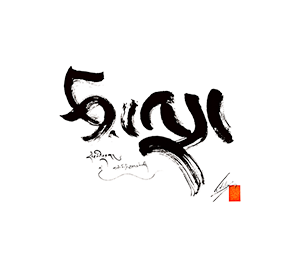Karl Brunnhölzl: On Karma Kagyu Proponents of Buddha-Nature Theory Prior to the 8th Karmapa
From Buddha-Nature
< Media
Karl Brunnhölzl: On Karma Kagyu Proponents of Buddha-Nature Theory Prior to the 8th Karmapa - 7 of 17
Video
Video
Previous Video
What Is My Mind without Me? Buddha-Nature in the Karma Kagyu School by Karl Brunnhölzl
Next Video
Sources Mentioned
Maitreya, Asaṅga: Ratnagotravibhāga Mahāyānottaratantraśāstra
The Ratnagotravibhāga, commonly known as the Uttaratantra, or Gyu Lama in Tibetan, is one of the main Indian scriptural sources for buddha-nature theory. It was likely composed during the fifth century, by whom we do not know. Comprised of verses interspersed with prose commentary, it systematizes the buddha-nature teachings that were circulating in multiple sūtras such as the Tathāgatagarbhasūtra, the Mahāparinirvāṇasūtra, and the Śrīmaladevisūtra. The Tibetan tradition attributes the verses to the Bodhisattva Maitreya and the commentary to Asaṅga, and treats the two as separate texts, although this division is not attested to in surviving Indian versions. The Chinese tradition attributes the text to *Sāramati (娑囉末底), but the translation itself does not include the name of the author, and the matter remains unsettled. It was translated into Chinese in the early sixth century by Ratnamati and first translated into Tibetan by Atiśa, although this text is not known to survive. Ngok Loden Sherab translated it a second time based on teachings from the Kashmiri Pandita Sajjana, and theirs remains the standard translation. It has been translated into English several times, and recently into French. See the Ratnagotravibhāgavyākhyā, read more about the Ratnagotravibhāga, or take a look at the most complete English translation in When the Clouds Part by Karl Brunnholzl.
Ratnagotravibhāga Mahāyānottaratantraśāstra;byams chos sde lnga;Uttaratantra;Maitreya;བྱམས་པ་;byams pa;'phags pa byams pa;byams pa'i mgon po;mgon po byams pa;ma pham pa;འཕགས་པ་བྱམས་པ་;བྱམས་པའི་མགོན་པོ་;མགོན་པོ་བྱམས་པ་;མ་ཕམ་པ་;Ajita; Asaṅga;ཐོགས་མེད་;thogs med;slob dpon thogs med;སློབ་དཔོན་ཐོགས་མེད་;Āryāsaṅga;Sajjana;ས་ཛ་ན་;sa dza na;paN+Di ta sa dza na;sa dzdza na;པཎྜི་ཏ་ས་ཛ་ན་;ས་ཛཛ་ན་;Ngok Lotsāwa Loden Sherab;རྔོག་བློ་ལྡན་ཤེས་རབ་;rngog blo ldan shes rab;rngog lo tsA ba;lo chen blo ldan shes rab;blo ldan shes rab;རྔོག་ལོ་ཙཱ་བ་;ལོ་ཆེན་བློ་ལྡན་ཤེས་རབ་;Ngok Lotsāwa;Ngok Loden Sherab;Lochen Loden Sherab;Loden Sherab;Ratnamati;Rin chen blo gros;རིན་ཆེན་བློ་གྲོས;theg pa chen po rgyud bla ma'i bstan bcos;ཐེག་པ་ཆེན་པོ་རྒྱུད་བླ་མའི་བསྟན་བཅོས།;Ratnagotravibhāga Mahāyānottaratantraśāstra;究竟一乘寶性論;रत्नगोत्रविभाग महायानोत्तरतन्त्रशास्त्र;ཐེག་པ་ཆེན་པོ་རྒྱུད་བླ་མའི་བསྟན་བཅོས།
Gö Lotsāwa Zhönu Pal: theg pa chen po rgyud bla ma'i bstan bcos kyi 'grel bshad de kho na nyid rab tu gsal ba'i me long
Gö Lotsāwa Zhönu Pal's commentary to the Ratnagotravibhāgavyākhyā, that presents the text from within the mahāmudrā tradition of Maitrīpa and Gampopa. More specifically, as Mathes reports, the author, himself, states in his colophon that "he combined the commentarial tradition of Loden Sherab with Gampopa's and Drigung Jigten Sumgön's mahāmudrā interpretation of the Ratnagotravibhāga." (A Direct Path to the Buddha Within, p. 411.)
Theg pa chen po rgyud bla ma'i bstan bcos kyi 'grel bshad de kho na nyid rab tu gsal ba'i me long;Kagyu;Mahamudra;Gö Lotsāwa Zhönu Pal;འགོས་ལོ་ཙཱ་བ་གཞོན་ནུ་དཔལ་;'gos lo tsA ba gzhon nu dpal;yid bzang rtse ba;mgos lo tsA ba gzhon nu dpal;'gos lo tsā ba gzhon nu dpal;ཡིད་བཟང་རྩེ་བ་;མགོས་ལོ་ཙཱ་བ་གཞོན་ནུ་དཔལ་;theg pa chen po rgyud bla ma'i bstan bcos kyi 'grel bshad de kho na nyid rab tu gsal ba'i me long;ཐེག་པ་ཆེན་པོ་རྒྱུད་བླ་མའི་བསྟན་བཅོས་ཀྱི་འགྲེལ་བཤད་དེ་ཁོ་ན་ཉིད་རབ་ཏུ་གསལ་བའི་མེ་ལོང་།
Karma Könchok Zhönu: rgyud bla ma'i bsdus don rton pa bzhi ldan mkhas pa dga' byed
Synopsis of the Ultimate Continuum Possessing Four Reliances and Causing Delight to the Learned
Rgyud bla ma'i bsdus don rton pa bzhi ldan mkhas pa dga' byed;Karma Könchok Zhönu;ཀརྨ་དཀོན་མཆོག་གཞོན་ནུ་;karma dkon mchog gzhon nu;rgyud bla ma'i bsdus don rton pa bzhi ldan mkhas pa dga' byed;རྒྱུད་བླ་མའི་བསྡུས་དོན་རྟོན་པ་བཞི་ལྡན་མཁས་པ་དགའ་བྱེད།;རྒྱུད་བླ་མའི་བསྡུས་དོན་རྟོན་པ་བཞི་ལྡན་མཁས་པ་དགའ་བྱེད།
Karma Könchok Zhönu: rgyud bla ma'i 'grel pa rton pa bzhi ldan mkhas pa dga' byed
Commentary on the Ultimate Continuum Possessing Four Reliances and Causing Delight to the Learned
Rgyud bla ma'i 'grel pa rton pa bzhi ldan mkhas pa dga' byed;Karma Könchok Zhönu;ཀརྨ་དཀོན་མཆོག་གཞོན་ནུ་;karma dkon mchog gzhon nu;rgyud bla ma'i 'grel pa rton pa bzhi ldan mkhas pa dga' byed;རྒྱུད་བླ་མའི་འགྲེལ་པ་རྟོན་པ་བཞི་ལྡན་མཁས་པ་དགའ་བྱེད།;རྒྱུད་བླ་མའི་འགྲེལ་པ་རྟོན་པ་བཞི་ལྡན་མཁས་པ་དགའ་བྱེད།
People Mentioned
About the video
| Featuring | Karl Brunnhölzl, Karma Phuntsho |
|---|---|
| Creator | Tsadra Foundation |
| Director | Perman, M. |
| Producer | Tsadra Foundation |
| Event | What Is My Mind without Me? Buddha-Nature in the Karma Kagyu School by Karl Brunnhölzl (26 February 2022, Munich and Bhutan) |
| Related Website | Buddha-Nature |
| Creation Date | 26 February 2022 |
| Citation | Brunnhölzl, Karl. "On Karma Kagyu Proponents of Buddha-Nature Theory Prior to the 8th Karmapa." Conversations on Buddha-Nature with Lopen Dr. Karma Phuntsho. Produced by the Tsadra Foundation Research Department, February 26, 2022. Video, 2:57. https://www.youtube.com/watch?v=lwkEEYrC-Jw. |
